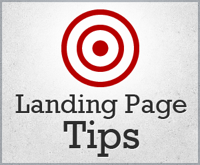
Blog

Should You Use Long Form or Short Form Content?
Long Form vs. Short Form
This topic comes up a lot when discussing content creation with clients. People often ask whether it’s better for their business to post long, detailed content or consistently put out shorter, easily skimmed posts.
The magic answer, like so many things in life: it depends.
Helpful, we know.
Which is why we work with them and encourage our clients to analyze their specific business, customers, industry, objectives and resources to determine the best, which is typically a mix of the two. But how do you find that perfect balance?
Consider the following:
Long Form Content (more than 2,000 words)
- Includes long blog posts and resources such as whitepapers, e-books, guides, resources, videos and webinars
- Allows you to go in-depth into a subject, which is particularly beneficial with technical or industry specific material
- Helps establish the author (your company) as an industry expert and thought leader
- Targets users that are educated and interested in your topic, often seeking it out (rather than simply stumbling across it)
- Takes time and effort to create quality pieces, so can work well for established companies that have the staff and resources to create
- Contrary to popular belief, long form content often ranks better for SEO
Marcus Sheridan, Founder of The Sales Lion, explains, “If Google has a choice to show two articles for the same keyword, which one are they going to chose: the one where readers average 45 secs on the page or the one where readers average 4.5 mins on the page.”

Even in our fast paced world, users will take the time to read (or watch) quality content they find helpful, releveant or interesting
Short Form Content (less than 1,000 words)
- Includes short blog posts, memes, infographics, videos, etc.
- Easy for users to share
- Increases the number of eyeballs on the post
- Easier to create and distribute frequently and consistently (works well for small companies or start ups who don’t have the resources to create long pieces)
- Attracts a broad audience
- Can’t go too in-depth, so not as easy to establish you as thought leader or expert
As you can see, there is a time and place for both, depending on your industry, customers and available resources. But more than focusing on the length of your content, the most important thing is to foucs on the quality.
Keep in mind, quality content:
- Is targeted toward one or more of your buyer personas
- Provides value to your customers
- Is consistently distributed through the proper channels
- Shows your personality
So when creating your content marekting plan, consider your objectives, who you are trying to reach and your capacity to create. Don't be afraid to test different formats and ask for feedback. Repeat and adjust as necessary.
If you’d like more information about content creation and distribution, adWhite offers free inbound marketing assessments. We’d love to hear from you and help you increase sales.
Subscribe to email updates
Recent posts

Related Articles

Topics

Topics

Topics







